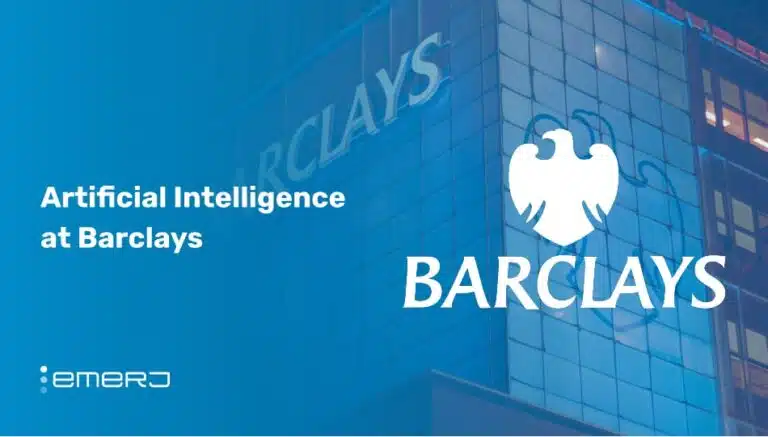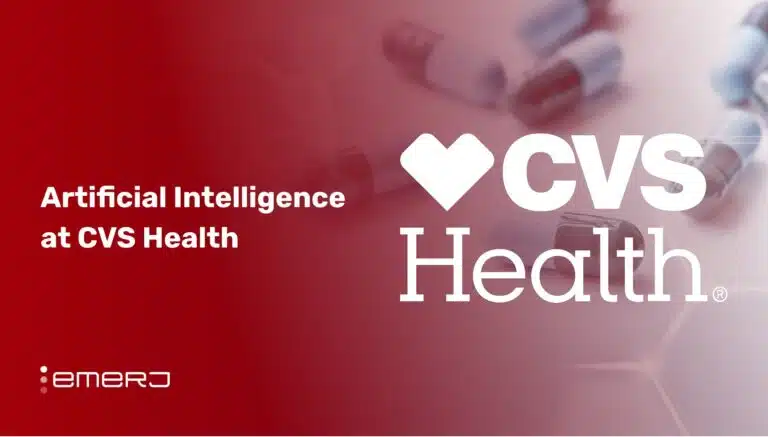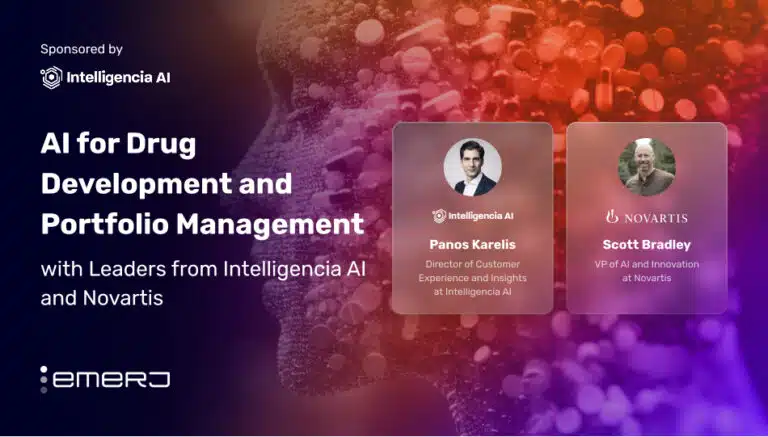Cencora, formerly known as AmerisourceBergen, is a leading global pharmaceutical solutions provider focused on delivering healthcare products and optimizing the patient journey. The company collaborates with pharmaceutical manufacturers, healthcare providers, and pharmacies to ensure that patients can access necessary therapies effectively.
In 2023, Cencora reported an annual revenue of $262.2 billion, reflecting a 9.9% increase from the previous year. Cencora also had approximately 44,000 employees globally as of the end of 2023, positioning the company as a leader in the healthcare delivery industry.
Although it is unknown how much Cencora invests in AI, there is evidence that Cencora is actively integrating AI into its operations to enhance efficiency and improve healthcare delivery.
This article focuses on two AI use cases that serve Cencora’s business goals:
- Streamlining benefit verification: Leveraging natural language processing (NLP)AI models to automate verification interactions with payors and pharmacy benefit managers, thereby supporting faster patient access to therapies.
- Improving medication adherence: Using predictive AI analytics and machine learning algorithms to identify non-adherence risks and inform prioritized outreach.
Streamlining Benefit Verification
Benefit verification is the process of confirming a patient’s health insurance coverage and benefits before providing medical services. It ensures that patients are informed about their financial responsibilities, such as co-pays, deductibles, or uncovered services. The step is critical for revenue cycle management, as 82% of denials are potentially avoidable, according to the Change Healthcare 2022 Revenue Cycle Denials Index.
For companies like Cencora, benefit verification is critical in ensuring timely access to therapies for patients. However, several factors contribute to inefficiencies in the traditional benefit verification processes:
- High Volume During Reverification Season: At the beginning of each year, changes in patients’ insurance coverage lead to a massive increase in benefit verification requests — up to 10 times the usual volume, according to an Infinitus Systems case study. Surges create bottlenecks in processing verifications, requiring additional seasonal staff and increasing costs
- Time-Consuming Manual Processes: Traditional methods rely on manual phone calls and paperwork exchanges with payors and pharmacy benefit managers, slowing down the verification process
- Delays in Patient Access to Therapy: Errors or incomplete information during manual verification cause significant delays in patient therapy initiation
To address these challenges, Cencora partnered with Infinitus Systems to integrate the Infinitus AI agent into their proprietary benefit verification ecosystem.
The Infinitus AI agent employs Natural Language Processing (NLP) models to navigate and understand complex, multi-turn conversations during phone calls with payors and pharmacy benefit managers (PBMs), according to an Infinitus newsletter briefing. These models allow the AI to interpret responses, ask follow-up questions, and clarify incomplete information in real-time, ensuring accurate data collection.
Screenshot from Infinitus Systems website. (Source: Infinitus.ai)
According to another Infinitus newsletter briefing, Infinitus also leverages machine learning models trained on millions of past calls and a robust knowledge graph that contains up-to-date intelligence on payor rules, guidelines, and coverage specifics for over 1,000 therapies, procedures, and medications. Knowledge graphs enable AI to make informed decisions during calls and adapt to changing insurance policies.
The briefing also reveals that the AI system uses multimodal dialogue breakdown models to maintain context throughout lengthy calls, ensuring that the agent can respond instantaneously without losing track of critical details.
Below is Infinitus’ framework for multimodal dialogue breakdown models:

Screenshot from Infinitus (Source: Infinitus.ai)
In turn, we found evidence from an Infinitus case study that the AI agent resolves inefficiencies associated with Cencora’s traditional verification process through:
- Automated Call Handling: The AI system automates outbound calls to over 200 payers and PBMs, navigating interactive voice response (IVR) systems, asking necessary questions, and gathering information efficiently. Automation eliminates the need for human staff to spend time on hold or being transferred between departments
- Automated Follow-ups: In cases where initial information is incomplete, the AI system can automatically initiate follow-up calls or requests to gather the necessary data.
- Data Collection and Standardization: The Infinitus AI agent collects up to 150 data points per call, including plan details, network status, cost-sharing requirements, and prior authorization needs. It standardizes this information across various payers and PBMs, ensuring consistency and accuracy in the data collected.
- Error Handling: The Infinitus AI agent is equipped to “push back” when the other party provides incorrect or incomplete information during a phone call. This proactive approach ensures that the benefit verification process is completed accurately, minimizing the risk of delays due to misinformation.
The AI agent continuously learns from previous interactions and outcomes, improving its accuracy and ability to handle similar situations in the future.
A Cencora case study documentation quantifies that in 2023, 470,000 benefit verifications shifted to automated processes, and a total of 600,000 patients were supported.
As a result of integrating the Infinitus AI agent, Cencora was able to meet surging seasonal verification demand of 10x or more, the Infinitus case study reports. The case study further claims that the automated process was 4x faster than the traditional process, even while maintaining high quality.
Infinitus completes the same number of phone calls as over 100 employees, according to the Infinitus case study, thereby increasing operational efficiency and reducing the need for seasonal workers.
Cencora also discloses that thanks to this flexible automation path, employees can now focus on complex cases that genuinely profit from manual intervention. Representatives may pick up where automation leaves off to reduce friction and ensure seamless patient access to therapy — especially during annual verification processes.
Improving Medication Adherence
A Public Health Reports paper finds that over 75% of Americans have trouble taking their medicine as directed, and approximately 125,000 deaths per year are caused by medical non-adherence in the United States alone.
From a business perspective, the global pharmaceutical sector forfeits an estimated $1 trillion each year due to non-adherence, according to an article by Sanjay K. Rao, vice president at SRI Inc. For companies like Cencora, this translates to a significant loss in opportunities to generate revenue and improve patient outcomes.
The most promising solution lies in prioritizing outreach — a 2018 study from Clinical Therapeutics found that patients who received personalized outreach had a 72% decreased risk of therapy discontinuation.
However, a study from the Mayo Clinic reveals that a common challenge in prioritizing outreach for non-adhering patients is the inherently fragmented nature of healthcare data. Patient data often exists in silos across providers, payors, and pharmacies. Furthermore, non-adherence is influenced by a wide range of factors, such as cost, access barriers, side effects, and patient motivation.
Manual methods at Cencora were unable to efficiently analyze large, fragmented datasets that are influenced by several variables. As a result, Cencora turned to predictive AI analytics and machine learning to analyze vast patient datasets and reduce non-adherence rates.
In 2023, Cencora’s President of Biopharma Services, Matt Wolf, sat for an interview with Pharmaceutical Commerce, disclosing that the company leverages predictive analytics to identify health-related behaviors and risk for non-adherence.
We found evidence of several data inputs for this predictive AI capability:
- Claims and Pharmacy Data: Cencora analyzes prescription refill patterns, claims data, and medication possession ratios to assess adherence trends
- Demographic and Socioeconomic Data: Patient demographic information (e.g., age, gender) and socioeconomic factors (e.g., income level, insurance status) for factoring external barriers to adherence
- Behavioral and Engagement Data: Data from patient interactions with digital tools or support programs, such as mobile app usage, engagement with reminders, or responses to surveys, are analyzed to identify behavioral patterns influencing adherence
- Clinical Events and Health Behaviors: Indicators such as hospitalizations, emergency visits, or lab test results are incorporated to assess the impact of clinical events on adherence rates
- Sensor and Wearable Device Data: Data from smart devices like pill dispensers, wearables, or home monitoring systems are used to track real-time medication intake and adherence behaviors

Screenshot from Medical Science Monitor (medscimonit.com)
By harmonizing these diverse data sources into its predictive analytics platform, Cencora can:
- Identify at-risk patients with high accuracy
- Tailor interventions to individual needs based on behavioral and socioeconomic profiles
- Allocate resources effectively by prioritizing outreach for patients most likely to benefit from additional support
In the same interview, Wolf also indicates that predictive AI capabilities combined with machine learning algorithms are able to form personalized engagement plans — containing schedules, payment assistance plans, and other critical information — that are sent out to patients.
According to a Cencora case study, following the adoption of AI-powered prioritized outreach, there was a:
- 24% increase in dormant patients who started treatment
- 8% increase in re-initiation of therapy among patients with a high non-adherence rate
- 25% reduction in nurse call interventions, enabling the reallocation of nurses to other necessary interventions



















